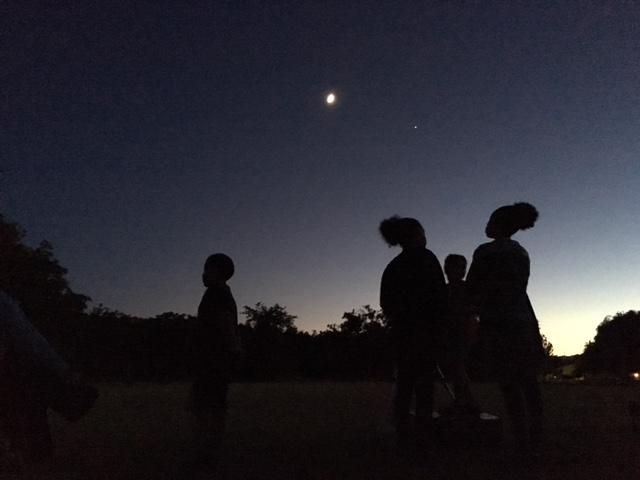Enjoying Outside, Inside: Stargazing From Your Backyard

Turns out, astrotourism is a thing. Dark Sky destinations have become very popular vacation spots but thanks to our lingering companion, the pandemic, people have taken to stargazing from the closeness of their own backyards. Stargazing from home can be a challenge, especially if you live in suburbia. SMUD tells you to plant trees which block your view of the night sky. There’s light pollution from neighboring yards, street lights and even the moon which interfere with dark skies. And then, there’s just knowing where and when to look. Things like a super moon are pretty easy to find but there’s so much more out there.
The first step is finding a location where you can see at least of portion of the open sky. Of course, if there is cloud cover, finding objects will be difficult but if the night is clear and you are able to omit some of the surrounding ambient light, the reward will be worth staying up a little later than normal. You don’t even need a telescope, a pair of 10X50 binoculars will leave you pretty impressed with your view of the night sky.
Doing a little bit of research is helpful before you find yourself sitting in a dark backyard. Here is a great article for beginner stargazers. You can also download one of the many apps designed to help you locate and track objects such as stars, planets, satellites, the International Space Station, phases of the moon, the location of constellations and other phenomena. I like the SkyView app, it shows you where objects are, even though you can’t see them. Like, if you point your phone at your feet, it’ll display space objects that are visible on the other side of the earth. Pretty cool, eh? Your research might also include exploring some websites. For example, NASA’s International Space Station website is fascinating. It’s updated so frequently, you can almost spy on the astronauts. On a side note, 2021 marks 20 consecutive years of humans occupying the space station. Stellarium is also a great website that will show you what to look for and when.
It’s important to let your eyes adapt to the darkness, it can take 20-30 minutes for your eyes to fully accommodate the darkness. If you’re using a flashlight, try covering the lens with a piece of red cellophane or find an app that uses red light such as Sky Walk. The red light won’t cause your pupils to dilate nearly as much as a white light does making it easier for your eyes to adjust between your flashlight or screen and the dark sky.
Now look up. Planets don’t flicker like stars appear to. When visible: satellites move steadily across the sky, Mars actually appears red, Venus is amazingly bright. Keep an eye on the news for meteor showers, passing comets, and eclipses. You can even sign up to receive notifications of when the International Space Station will be passing by your location (I just did!). You can also join local astronomy clubs to learn when and where to look for things like different constellations.
If you prefer to save your neck muscles, here are some captivating YouTube videos to peruse.
This one gives a short history of space exploration along with some amazing photos and videos of our own solar system.
These videos show images taken by the Hubble Space Telescope, which was designed to last only 15 years has actually been orbiting Earth for 30 years!
And, here is a timelapse of Alaska’s Aurora Borealis (Northern Lights) and an instructional video on how they are formed and here is a video of the Northern Lights taken from the International Space Station.
Here is a live skycam from the Meadow View Observatory in Chico and another one from the Twin Pines Observatory in Belmont, CA. If you happen to look at them during daylight hours, you can check out the previous night’s action.
Be sure to keep an eye on Tuleyome’s website for local stargazing events once the stay-at-home order has been lifted!
RECENT ARTICLES






